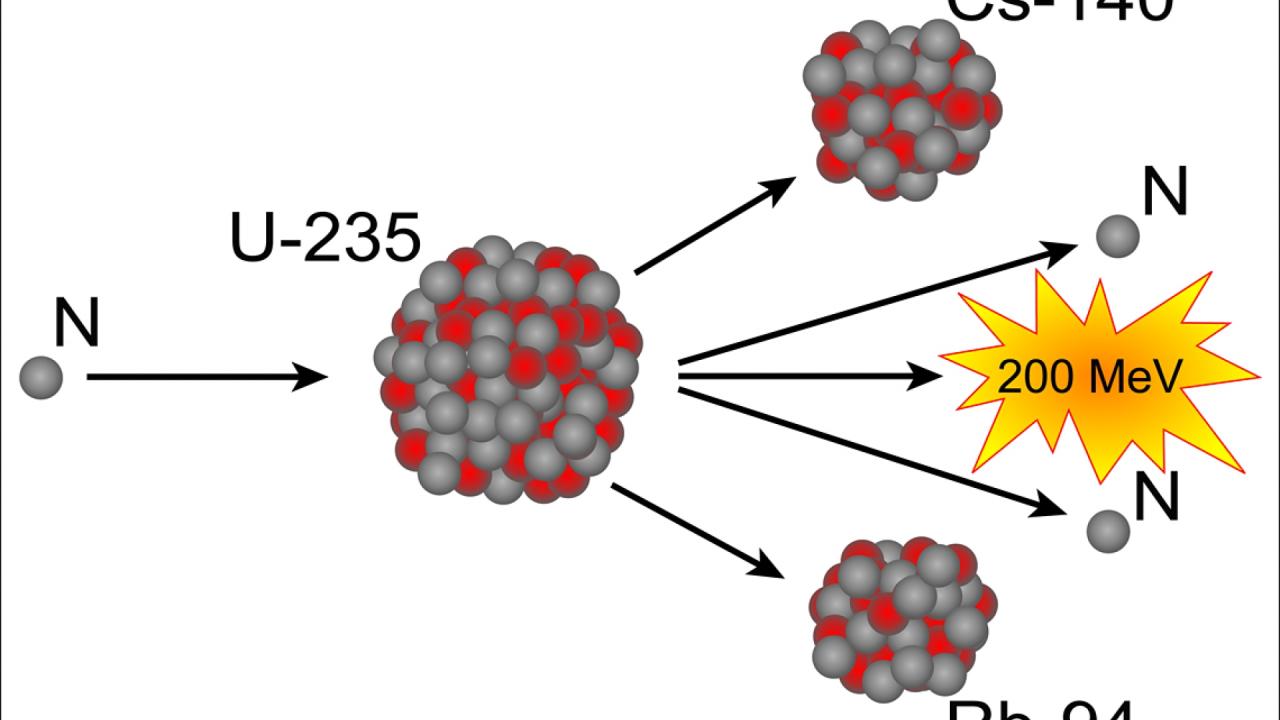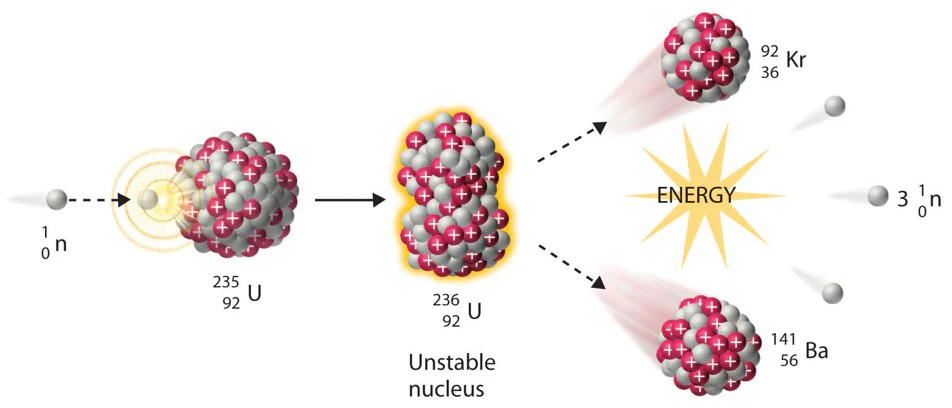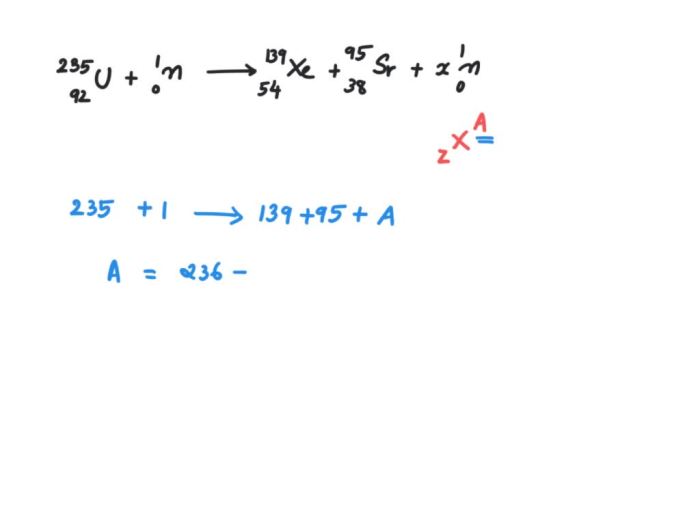Uranium-235 undergoes the following fission process after absorbing a neutron, initiating a chain reaction that releases enormous energy. This process forms the basis of nuclear power generation and has significant implications for energy production and nuclear technology.
Upon neutron absorption, uranium-235 splits into smaller nuclei, releasing a substantial amount of energy in the form of heat and radiation. The fission products formed during this process possess unique properties and play a crucial role in nuclear reactions.
Uranium-235 Fission Process

Uranium-235 (U-235) undergoes fission, a process where its nucleus splits into two smaller nuclei, when it absorbs a neutron.
Neutron absorption disrupts the U-235 nucleus, causing it to become unstable and undergo fission.
Steps Involved in Fission, Uranium-235 undergoes the following fission process after absorbing a neutron
- Neutron Absorption:A neutron is absorbed by the U-235 nucleus, forming an unstable U-236 nucleus.
- Nuclear Deformation:The U-236 nucleus becomes elongated and unstable.
- Fission:The U-236 nucleus splits into two smaller nuclei, typically krypton and barium, releasing energy and additional neutrons.
Energy Release and Product Formation

Fission releases a tremendous amount of energy, calculated using Einstein’s mass-energy equivalence equation (E=mc^2).
The fission products include two smaller nuclei (e.g., krypton and barium), several neutrons, and gamma rays.
Significance of Fission Products
- Release additional neutrons, perpetuating the chain reaction.
- Contribute to the radioactive waste generated in nuclear reactions.
- Have applications in medicine (e.g., krypton for imaging) and research (e.g., barium for dating).
Chain Reactions and Criticality

Fission can trigger a chain reaction, where the neutrons released from one fission event cause subsequent fissions.
Criticality refers to the state where the chain reaction becomes self-sustaining, releasing a controlled amount of energy in a nuclear reactor.
Factors Influencing Criticality
- Neutron Production:The number of neutrons released per fission.
- Neutron Leakage:The loss of neutrons from the system.
- Neutron Absorption:The absorption of neutrons by non-fissile materials.
Applications and Implications: Uranium-235 Undergoes The Following Fission Process After Absorbing A Neutron
U-235 fission is utilized in:
- Nuclear Power Generation:Fission reactions in nuclear reactors produce heat, which is used to generate electricity.
- Medical Treatments:Radioisotopes produced from fission (e.g., iodine-131) are used for diagnosis and therapy.
Implications
- Energy Source:U-235 fission provides a significant portion of the world’s electricity.
- Nuclear Waste:Fission products pose radioactive waste management challenges.
- Nuclear Proliferation:U-235 can be used to create nuclear weapons.
Questions and Answers
What is the significance of uranium-235 fission?
Uranium-235 fission is crucial for nuclear power generation, as it releases a vast amount of energy that can be converted into electricity.
How does neutron absorption initiate fission?
When a neutron is absorbed by uranium-235, it destabilizes the nucleus, causing it to split into smaller nuclei and release energy.
What are the key steps involved in the fission process?
The fission process involves neutron absorption, nuclear splitting, energy release, and the formation of fission products.